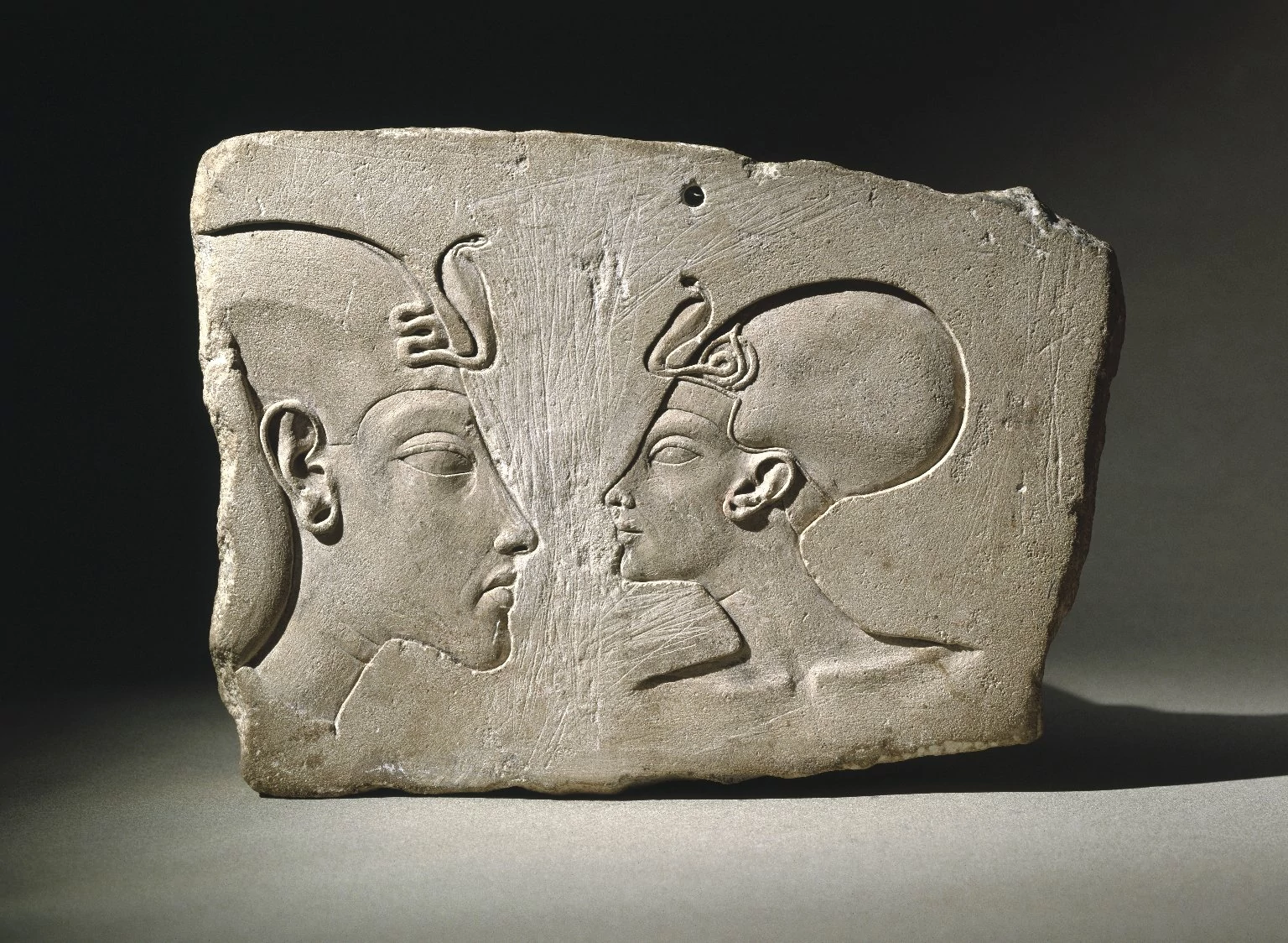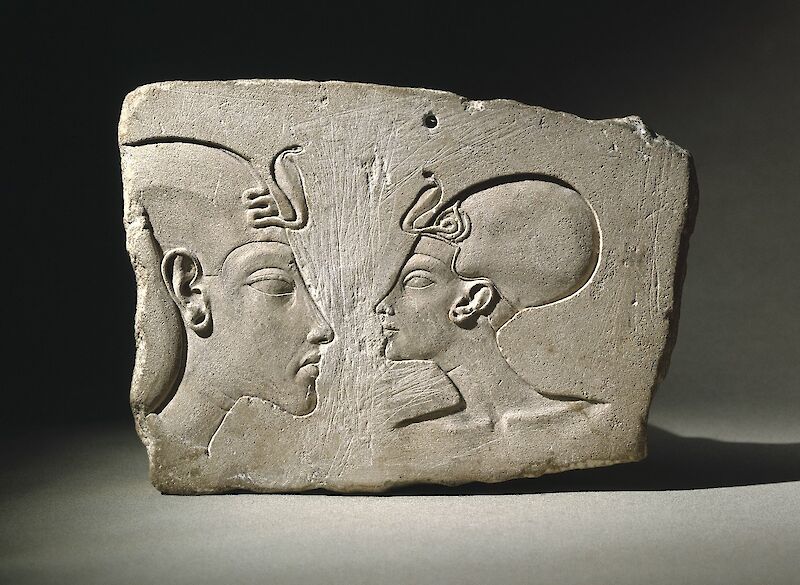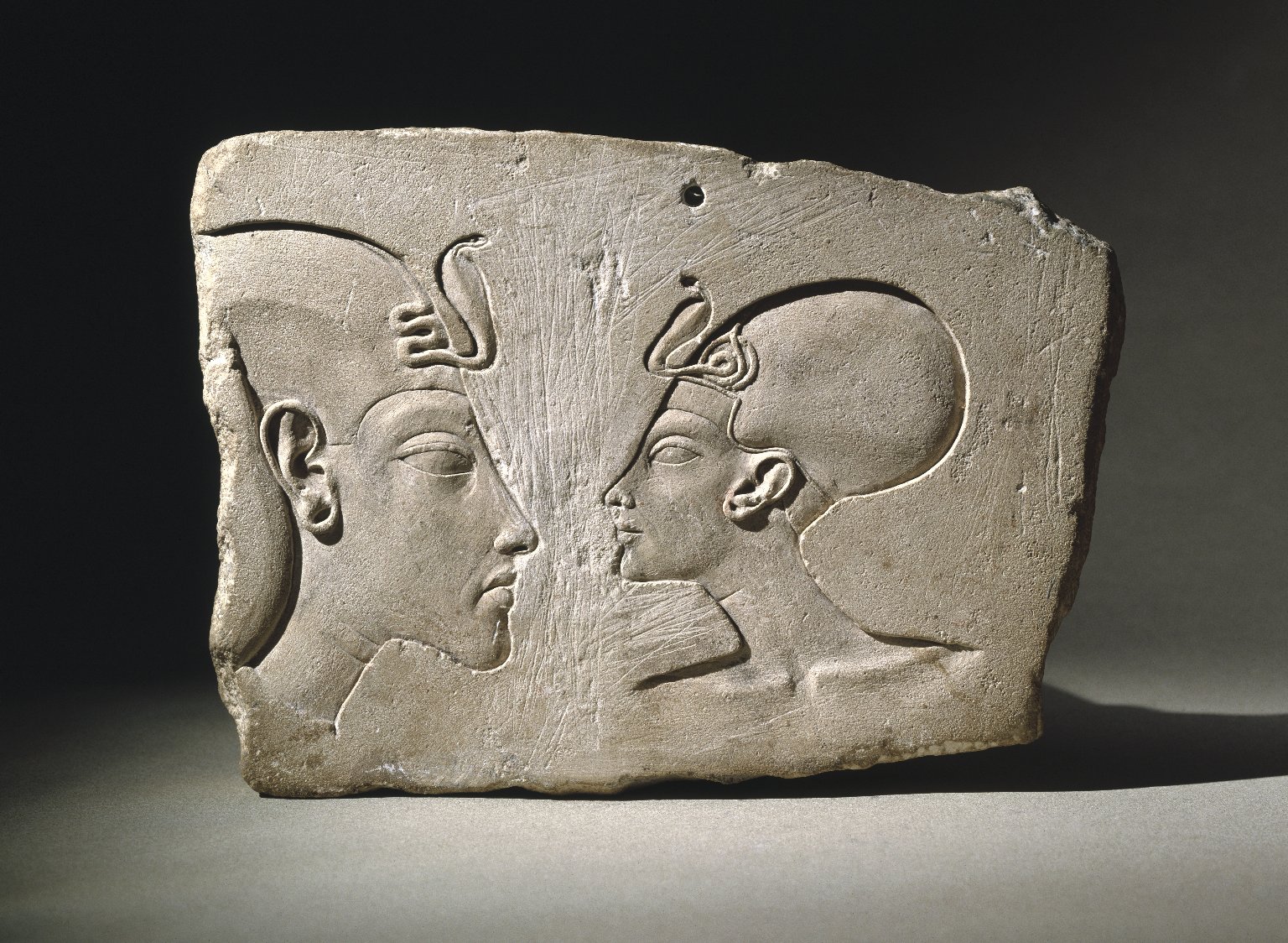


This relief sculpture, called the Wilbour Plaque, is an artist’s reference—a sketch in stone that was hung in the workshop by the hole at the top of the stone to be studied and copied by students. The figure on the left is probably Akhenaten, due to his ‘hatchet-faced’ bone structure, and opposite him queen is Nefertiti. Both wear uraeus headdresses bearing the sacred serpent, an emblem of supreme power.
In 1880, Charles Edwin Wilbour traveled to Egypt. An American lawyer, journalist and Egyptologist, Wilbour had spent much of his life consulting with the British Museum and working with historians, and at age 47 he became an archeologist. Traveling by houseboat, Wilbour worked at archeological sites throughout the country and compiled a collection of papyri and artifacts that was later donated to the Brooklyn Museum.
